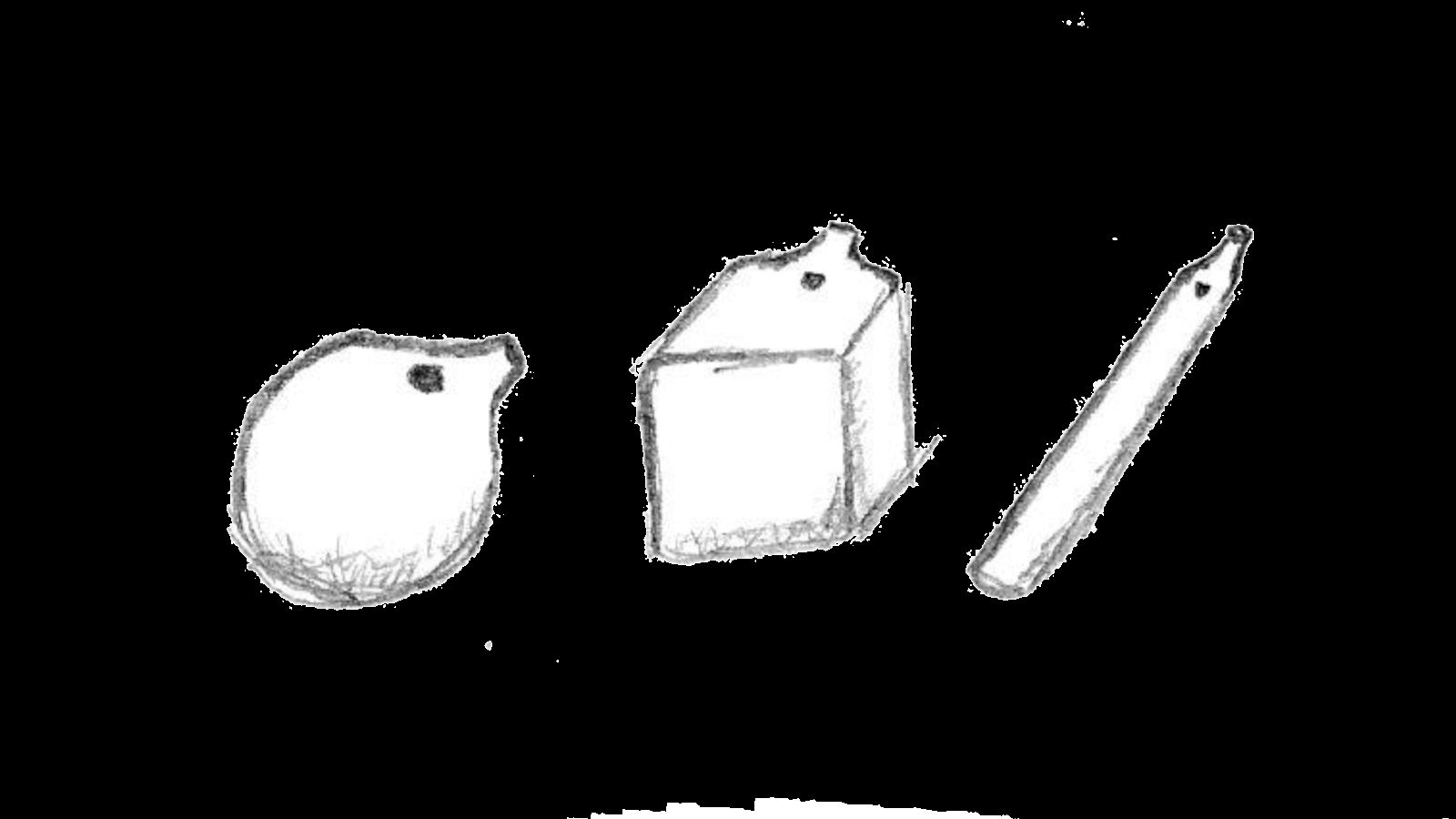
‘long low slow baden’ is a soft landing on earth. An acoustic immersive installation wherein the audience is one by one invited to lay down on an inflatable positioned beneath a tree. Moving up and down, feeling your own body, slowing down and sensing gravity. This movement makes two large ceramic flutes breath out, sounding long low slow tones.
The flutes create slow beatings which deform our perception of all sounds around, when you land on the ground the flutes stop sounding and you start hearing the remaining ‘silence’, the sound of the surrounding. This performative installation only uses human energy and gravity. Two audience guides move the mechanism, gathering the air around us, giving you a personal and intimate experience.
'long low slow baden' grew from the performative installation 'Baden', a co-creation with Annabel Schouten.
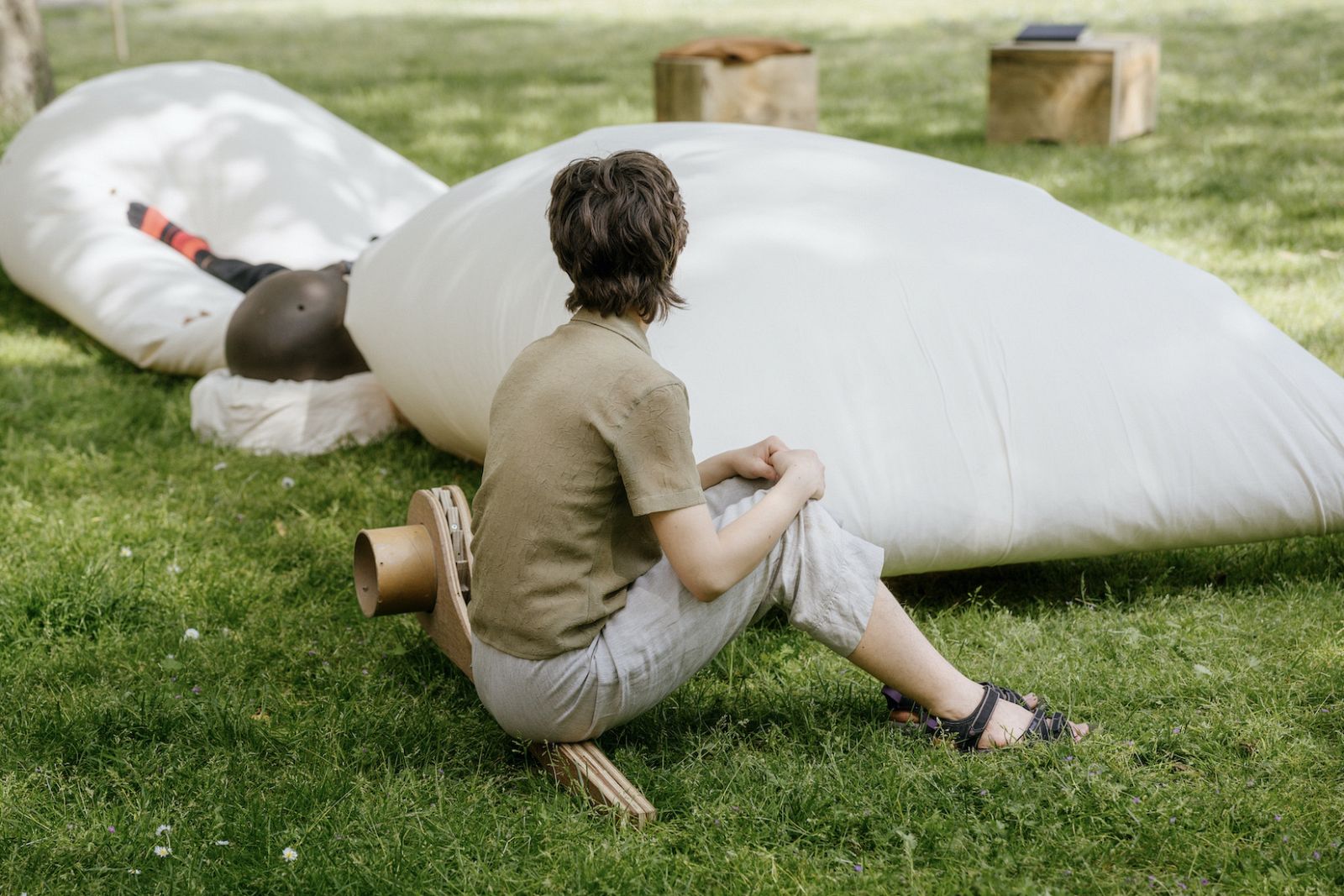
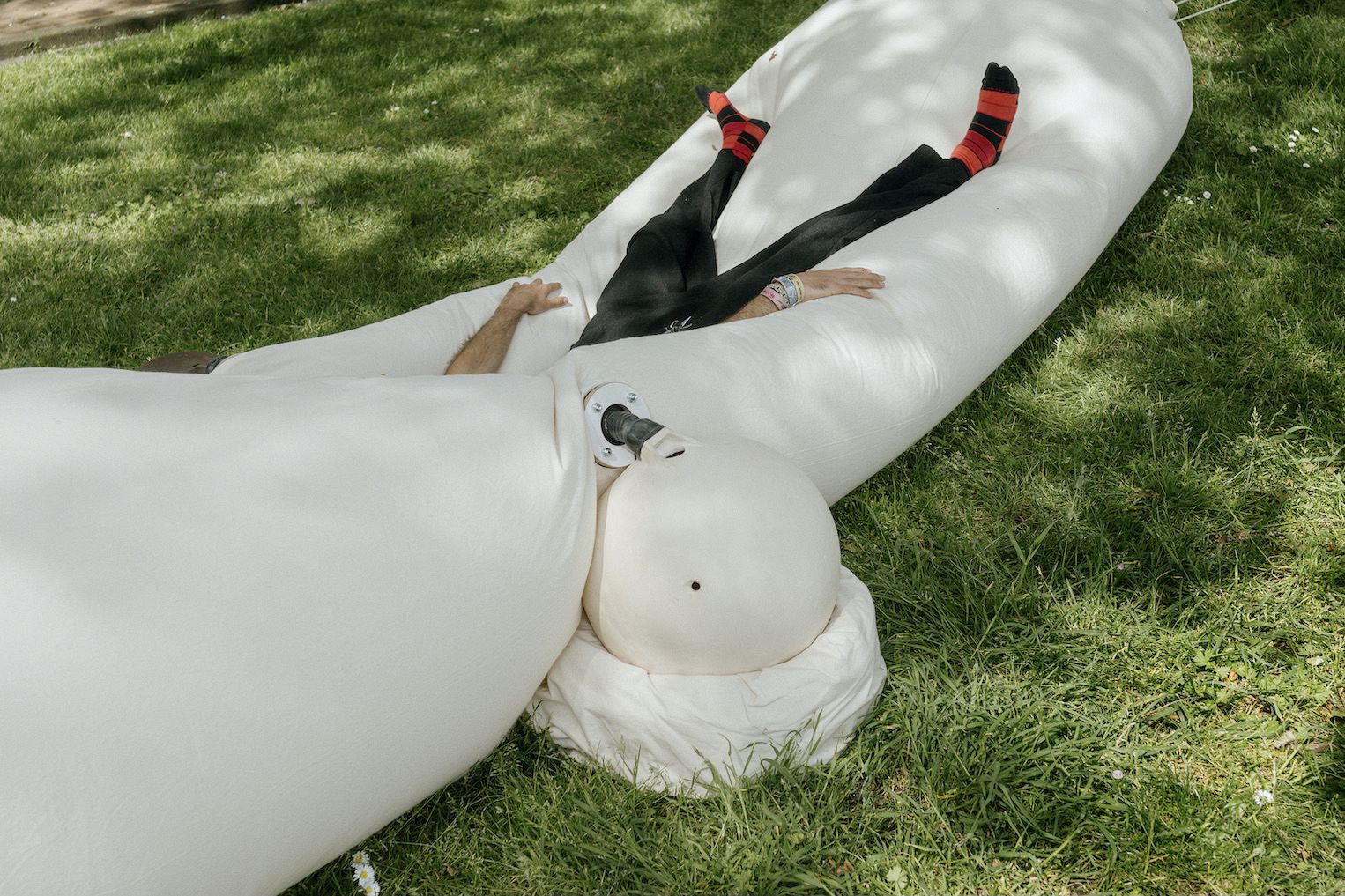
During the graduation show Gemma Luz Bosch will also present:
clay breath bodies: “The process of dried clay dissolving in water”
Drop one or more cubes inside the sculpture and listen closely. It may take a minute for the sound to begin. Each cube is a unique instrument, composition and musician that makes sound by “breathing”. The air inside the dried clay escapes towards the water's surface, creating various bubbling sounds. The shape of the Clay Breath Body makes certain tones resonate. The process is unpredictable and it lives its own life. The temporality of this work appeals to me, the clay melts, decays, vanishes in the water.
Growing up in Spain, I witnessed droughts becoming an increasing problem. Now living in the Netherlands, we are doing our best to pump out the excess water. Water management has two issues; too much or too little. In Clay Breath, the clay is first (too) dry and then it is immersed in water.
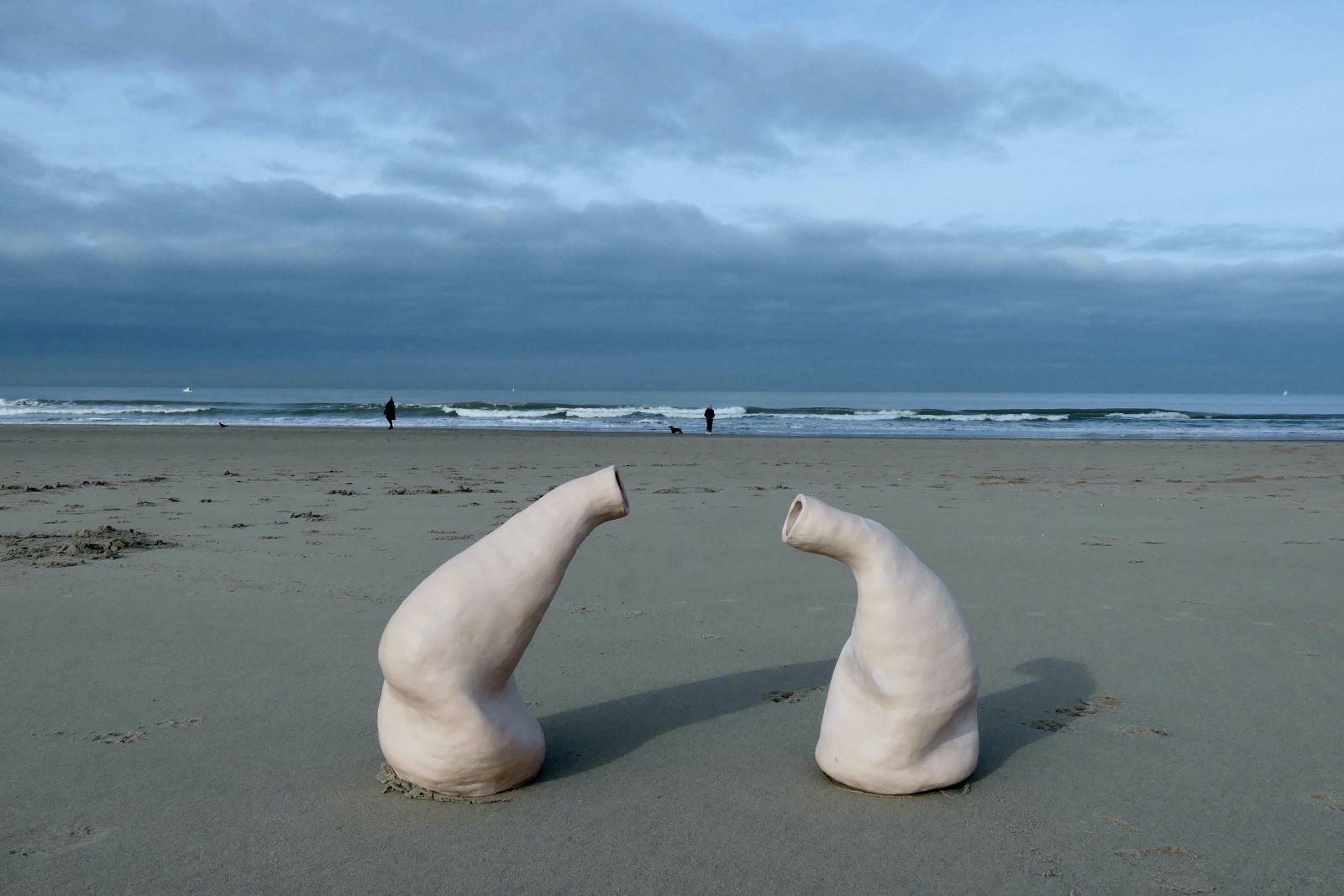
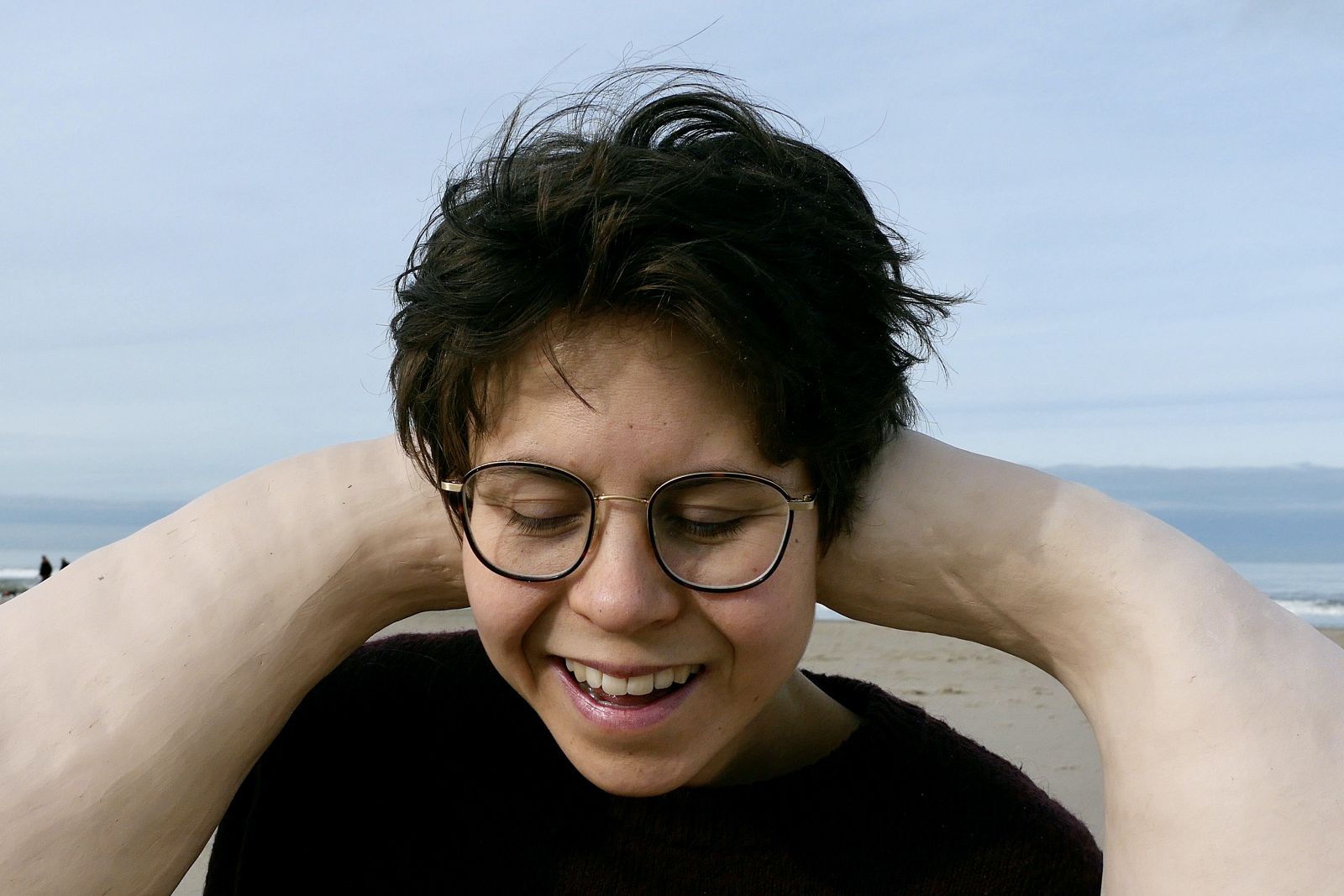
Thesis: ‘how shape influences sound’
Through my thesis I invite you to follow, understand and experience the experiments I have done this year around the topic ‘How shape influences sound’.
I invite you to be curious, to sometimes close your computer or book, to listen to the surrenders, to listen to how the walls, or trees, or mountains influence the sound you are experiencing. Imagine seeing the sound waves in space. From their origin, bouncing with the borders of the medium air and finally arriving to your ears. Through little experiments I invite you to expand you own way of listening.
